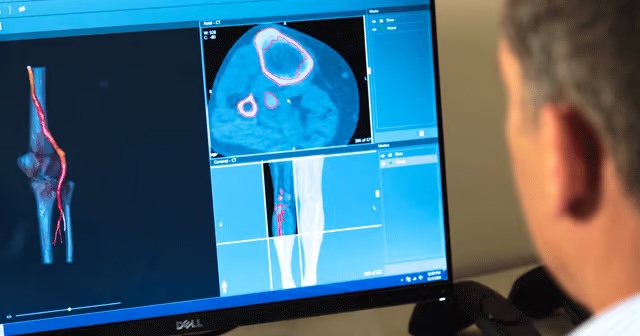3D Systems, the additive manufacturing (AM) pioneer based in South Carolina, has launched the Regenerative Tissue Program, a bioprinting project for patient-specific, living human tissues. By combining the company’s bioprinting hardware with its Virtual Surgical Planning (VSP) software, 3D Systems will work with surgeons to produce vascularized, living human tissues that are customized for individual patients.
3D Systems has been researching this deployment of its bioprinting capabilities for the past year, and has been most immediately focused on applying the technology to efforts that could eventually allow humans to grow new blood vessels. The process begins with the 3D printing of a scaffold using a system similar to its Figure 4 3D printer. The scaffold can then be combined with adipose cells harvested from a patient during surgery. Specifically, the company has been developing methods of bioprinting vascularized tissues to aid reconstructive surgery for breast cancer survivors, which has resulted in the new initiative’s first product, regenerative breast tissue (RBT). 3D Systems has already completed several clinical trials using large animals and has even demonstrated the ability to connecting a bioprinted scaffold to vasculature. Due to the nature of the process, the company is able to tailor the product to the patient, including the use of their own cells.

In a press release announcing the Regenerative Tissue Program, 3D Systems’ VP of regenerative medicine, commented, “…[W]e now have a unique, vertically integrated technology platform that enables us to produce detailed hydrogel scaffolds for multiple soft tissue applications. Our ability to 3D print high resolution and large volume biointegrative, vascularized tissue sets us apart and opens tremendous opportunities in providing a unique solution to breast reconstruction surgeons and patients.” The company’s president and CEO, Dr. Jeffrey Graves, added, “We’re proud of the progress we’re making in the development of bioprinting solutions for human organs including lung, liver, and kidney. With this as the foundation, combined with the expertise gained through years of experience in the manufacturing of personalized medical implants, we have quickly moved into the development of patient-specific human tissues that can dramatically alter how patient care is delivered.”
In January, 2021, 3D Systems boldly and publicly ramped up its activity in the bioprinting space by announcing that the company, in partnership with United Therapeutics Corporation, had used its hydrogel scaffolds to bioprint functioning human lungs. 3D Systems has continued to accelerate its activity in the space since then, even spinning off its bioprinting division into its own company, Systemic Bio.
The biggest potential upside for 3D Systems’ proliferating bioprinting portfolio lies in how the company could realistically leverage its presence in aerospace & defense, and even space, as an edge in boosting its bioprinting revenues. I don’t know offhand, but I can’t imagine that the US military isn’t the world’s largest single purchaser of prosthetics, which is presumably the market that’s the best indicator for the future trajectory bioprinting. The U.S. military is also already exploring the use of regenerative skin tissue patches, signifying definite interest in regenerative medicine via bioprinting.
The US military likes to collaborate with companies that already have established track records of working with either the military or its preferred defense contractors. The fact that 3D Systems checks those boxes means that it has a better chance of getting military/government contracts related to bioprinting, than would standalone bioprinting companies without proven track records of working with the public sector.
Images courtesy of 3D Systems
Subscribe to Our Email Newsletter
Stay up-to-date on all the latest news from the 3D printing industry and receive information and offers from third party vendors.
You May Also Like
Precision at the Microscale: UK Researchers Advance Medical Devices with BMF’s 3D Printing Tech
University of Nottingham researchers are using Boston Micro Fabrication‘s (BMF) 3D printing technology to develop medical devices that improve compatibility with human tissue. Funded by a UK grant, this project...
3D Printing Webinar and Event Roundup: April 21, 2024
It’s another busy week of webinars and events, starting with Hannover Messe in Germany and continuing with Metalcasting Congress, Chinaplas, TechBlick’s Innovation Festival, and more. Stratasys continues its advanced training...
3D Printing Webinar and Event Roundup: March 17, 2024
It’s another busy week of webinars and events, including SALMED 2024 and AM Forum in Berlin. Stratasys continues its in-person training and is offering two webinars, ASTM is holding a...
3D Printed Micro Antenna is 15% Smaller and 6X Lighter
Horizon Microtechnologies has achieved success in creating a high-frequency D-Band horn antenna through micro 3D printing. However, this achievement did not rely solely on 3D printing; it involved a combination...





























